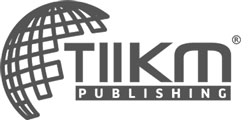ACADEMIC AND WORKPLACE COMPETENCY, ENGAGEMENT, AND PERFORMANCE OF THE GOVERNMENT BANK EMPLOYEES
Downloads
License
Copyright (c) 2023 JAP Montales

This work is licensed under a Creative Commons Attribution 4.0 International License.
The study assessed the level of academically acquired competencies of the business education graduates employed at the government banking institutions and the required competencies stated in the competency framework for government employees. The study also placed interest in how engaged are the government bank employees at work. Further, the study investigated the relationship and influence of competencies and employee engagement on employee performance. There were of 112 participants from 11 branches of the government banks in Bukidnon. Descriptive - correlational and causal research designs were used complemented with the unstructured interview. The study indicated that employees in government banking institutions have ‘strongly acquired’ the knowledge, skills, and attitude, signifying that all the competencies were highly developed during their academic years. The leadership, technical, core, and organizational competencies, on the other hand, were highly required by the government banking institutions; therefore, the bank employees possess the competencies essential for the delivery of the banking functions, and that these competencies were needed to perform the task excellently. Moreover, employees have a high level of engagement in their work and the organization in terms of shared mood. Employees’ engagement has a strong relationship with employees’ performance. Although acquired and required competencies and employee engagement positively correlate with the job performance of the bank employees, the technical competencies solely correlate with the employees’ performance. Furthermore, there exist gaps in the competencies that were highly developed by the graduates from the academe and those learned from their workplace. These gaps are core competence, interpersonal skills, professionalism, technical competence, leadership and management. These gaps may be considered as areas for improvement of the academic institutions.
Ashcraft, M.H. (2006). Cognition.Upper Saddle River, N. J.: Prentice Hall.
Bernarte, R. (2014). Academe-Industry Partnership in The Philippines: Nature, Benefits and Problems. Asia Pacific Higher Education Research Journal Vol 1 Issue 1. From https://po.pnuresearchportal.org/ejournal/index.php/apherj/article/view/77.
Chakravarty, R., & Sharma, J. (2016). Technical and behavioural competencies of library professionals in panjab university chandigarh: A survey. International Journal of Information Dissemination and Technology, 6(2), 119-121. Retrieved from https://search.proquest.com/docview/1821769846?accountid=139409.
Commission on Higher Education Memorandum No. 17 Series 2017.Policies, Standards and Guidelines for Bachelor of Science in Business Administration.
Commission on Higher Education Memorandum No. 46 Series 2012.Outcome-Based Education (OBE) for Bachelor of Science in Business Administration.
Cudes, C. (2020, March 10). CHED pushes for annual SUC innovation expo. Philippine News Agency. From https://www.pna.gov.ph/articles/1096155.
Dave, M., Dave, M., & Shishodia, Y. S. (2012). Knowledge Management and Organizational Competencies: A Harmonic Collaboration. International Journal of Advanced Research in Computer Science and Software Engineering, 2(12), 45–50. Retrieved from https://www.ijarcsse.com/docs/papers/12_December2012/Volume_2_issue_12_December2012/V2I12-0125.pdf.
De Tejada, A. M. (2015). Professionalism in banking: The best route to recovery. Aestimatio, (10), 134-145. doi:http://dx.doi.org/10.5605/IEB.10.6
Edwards, M. (2018). Bridging the gap: an evidence-based approach to employee engagement. Institute for Employment Studies (IES). HR Network Paper 141. Retrieved from https://www.employment-studies.co.uk/resource/bridging-gap-evidence-based-approach-employee-engagement.
Farlow, M. (2012). Leaders Are Born, Not Made: 40 Simple Skills to Make You the Leader You Want To Be. LinkUp Publishing: USA. ISBN: 978-0-9826746-8-0
Gomber, P., Kauffman, R., Parker, C., & Weber, B. (2017). On the Fintech Revolution; Interpreting the Forces of Innovation, Disruption & Transformation in Financial Services. Sites.psu.edu.
Hafeez, K., Malak, N., & Zhang, Y. B. (2007). Outsourcing non-core assets and competences of a firm using analytic hierarchy process, Computers & Operations Research, 34, 3592- 3608. doi:10.1016/j.cor.2006.01.004.
Hodges, D., & Burchell, N. (2003). Business graduate competencies: Employers' views on importance and performance. International Journal of Work-Integrated Learning, 4(2), 16.
Montales, J. A. P., Garcia, H. P., & Saniel, D. M. T. (2020). Correlational Analysis between Competencies Acquired by Business Education Graduates and Required by the Financial Industry. Liceo Journal of Higher Education Research, 16(2).
Ng, T. W. H., & Feldman, D. C. (2009). How Broadly Does Education Contribute to Job Performance? Personnel Psychology, 62(1), 89–134. https://doi.org/10.1111/j.1744-6570.2008.01130.x
Nimsith, S.I., Rifas, A.H., & Cader, M.J.A. (2016). Impact of Core Competency on Competitive Advantage of Banking Firms in Sri Lanka. International Journal of Scientific Research & Innovative Technology, ISSN: 2313-3759, Vol. 3, No. 7. Retrieved 30 October 2020, from https://www.ijsrit.com/uploaded_all_files/ 1475528331_m6.pdf.
Saeed, R., Mussawar, S., Lodhi, R. N., Iqbal, A., Nayab, H. H., & Yaseen, S. (2013). Factors affecting the performance of employees at work place in the banking sector of Pakistan. Middle East Journal of Scientific Research, 17(9), 1200–1208. https://doi.org/10.5829/idosi.mejsr.2013.17.09.12256.
Šehić-Kršlak, S., & Kršlak, A. (2017). Planning as a Management Function in Modern Banking Systems. Science. Business. Society., 2(1), 24-26.
The Manila Times (2014, Sept.). CEO Corner: Bridging the gap between academe and industry. The Manila Time, September 7, 2014 Issue. Retrieved from https://www.manilatimes.net/2014/09/07/business/bridging-gap-academe-industry/124922/.





